The best GoPro gimbal in 2025: get smooth footage on your action camera
The best GoPro gimbals will ensure your action camera footage looks smooth even when you're moving quickly
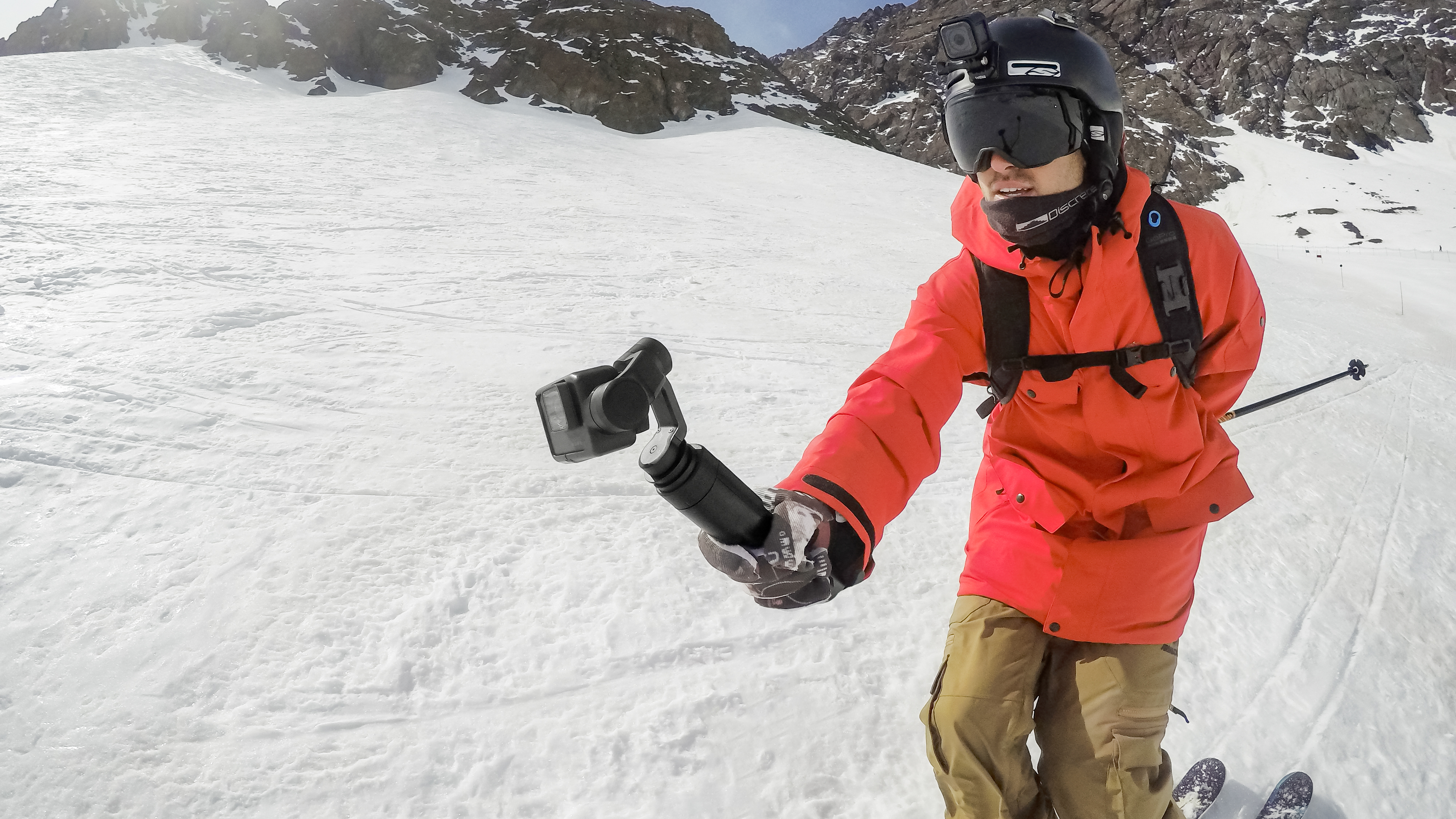
The best GoPro gimbals allow you to capture silky-smooth, cinematic footage on your GoPro Hero camera. While GoPro action cameras are known for their excellent stabilization systems, these can only do so much – particularly when the light gets low. A gimbal provides a whole new level of stability.
Gimbals work using sensors and motors to correct and counteract vibration and unwanted camera movements. At Digital Camera World, they are among the camera accessories we regularly test and review, alongside the best GoPro cameras themselves, and I've used our team's findings to compile this list.
Gimbal compatibility is generally quite specific, so I've made sure to only include gimbals that will work with a GoPro. If you'd prefer to use the phone in your pocket, check out our guide to the best smartphone gimbal. Or, for use with a larger camera, our guide to the best gimbal for DSLRs and mirrorless cameras. See the bottom of this page for some helpful pointers on choosing a gimbal for your GoPro – and let's get to the list!
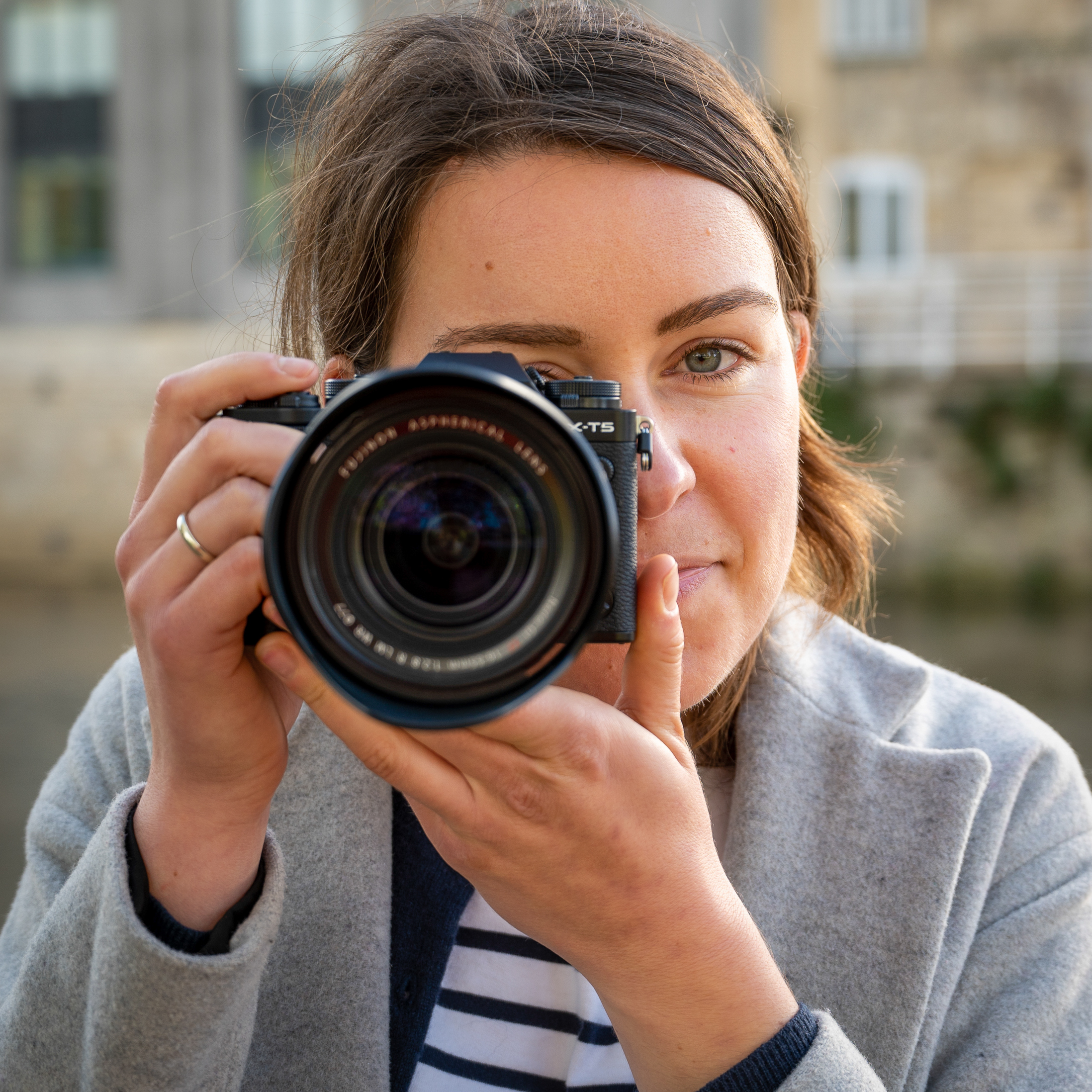
Lauren is a writer, reviewer, and photographer with ten years of experience in the camera industry. She's the former Managing Editor of Digital Camera World, and previously served as Editor of Digital Photographer magazine, Technique editor for PhotoPlus: The Canon Magazine, and Deputy Editor of our sister publication, Digital Camera Magazine.
The quick list
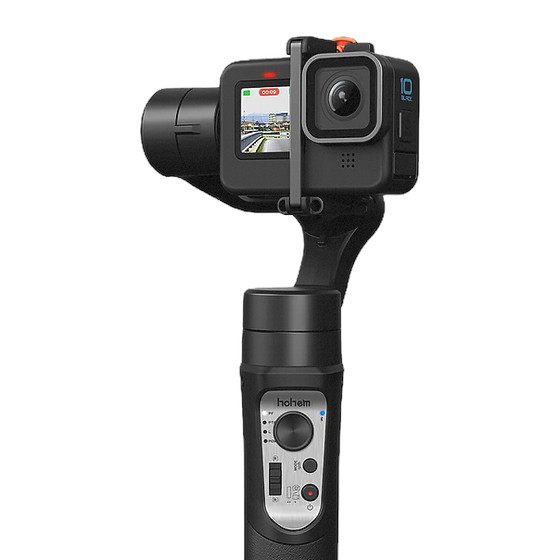
Designed specifically for action cameras, and pretty cheap to boot, the Hohem iSteady Pro 4 is going to be the best starter gimbal for the majority of GoPro users.
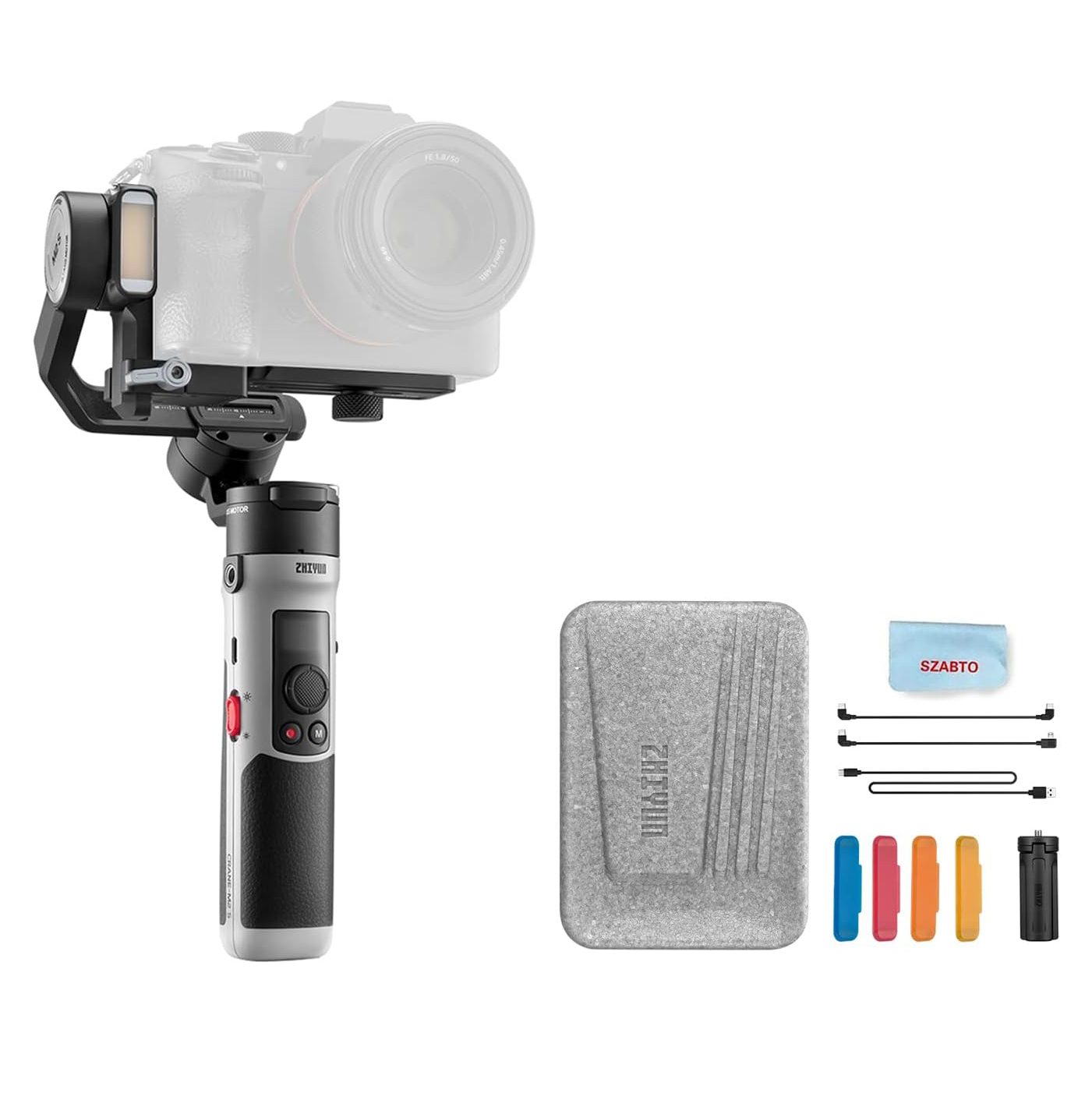
With a number of cinematic movement modes, the Zhiyun Crane M2S Combo Kit is an ideal gimbal for filmmakers who want to introduce some drama and motion to their shots.
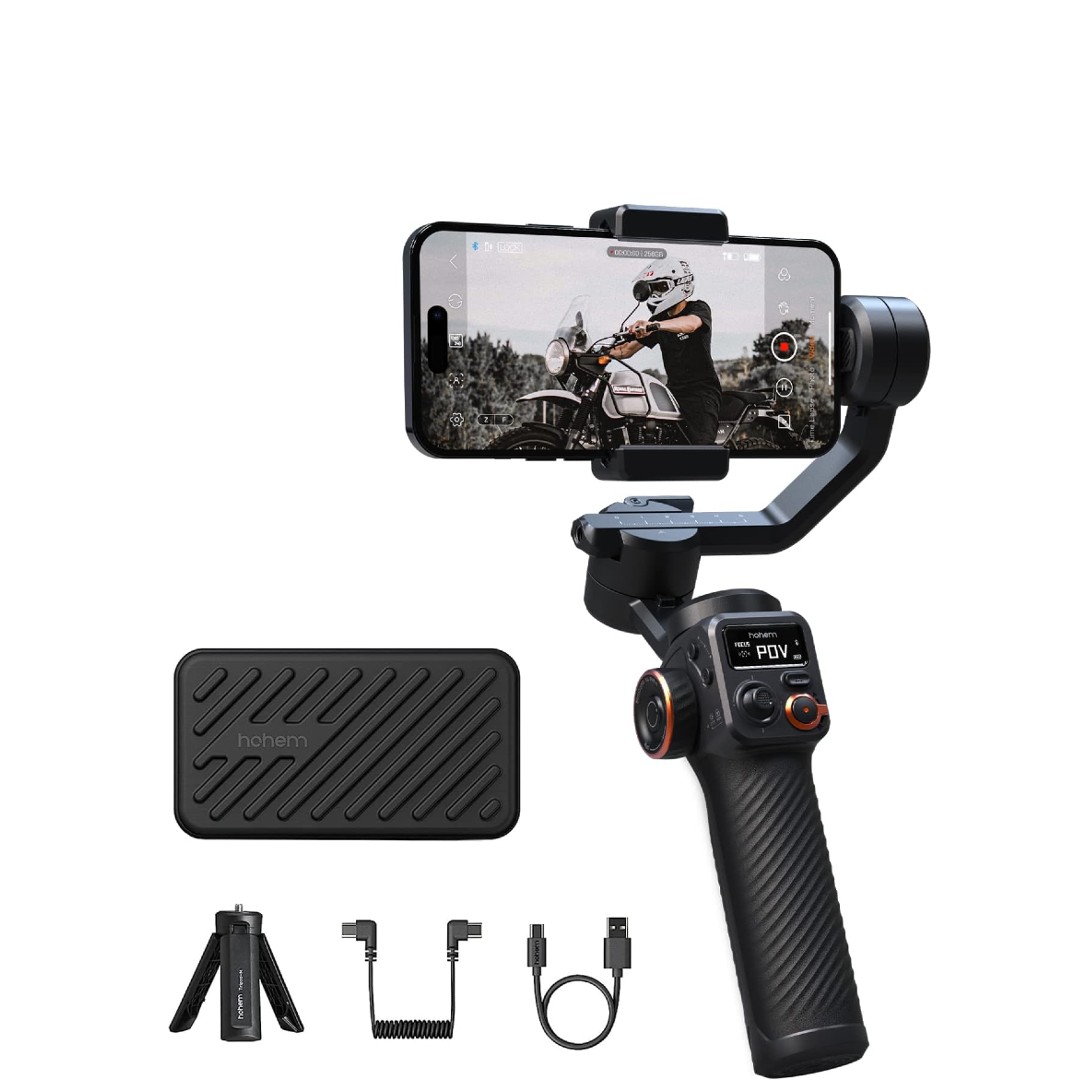
With a clever AI-powered sensor module, the Hohem iSteady M6 can follow your face as you move, keeping you consistently in the centre of the frame.
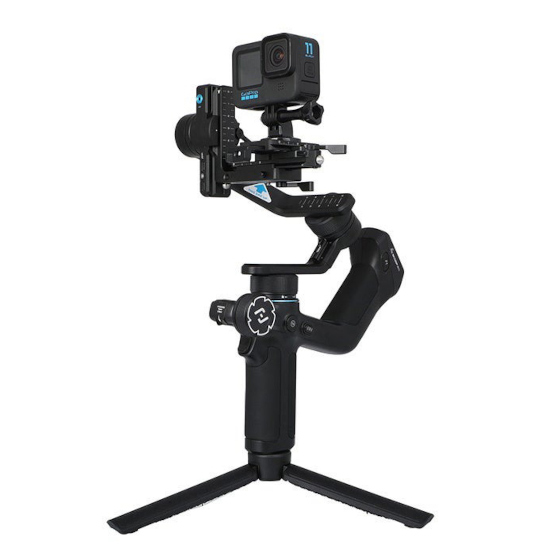
With AI-powered gesture controls and impressive app integration, the Feiyutech Scorp Mini 2 has an interesting edge over many of its competitors. It's GoPro-compatible, but unfortunately not waterproof.
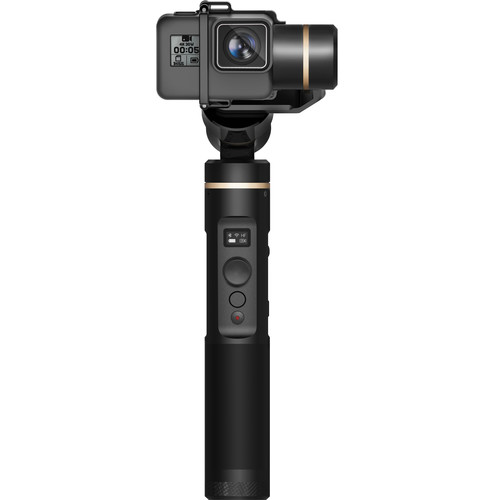
With a hardy water-resistant build, the Feiyutech G6 is an ideal gimbal for action cameras. It's controllable via an app and can be used with most models (though app compatibility varies).
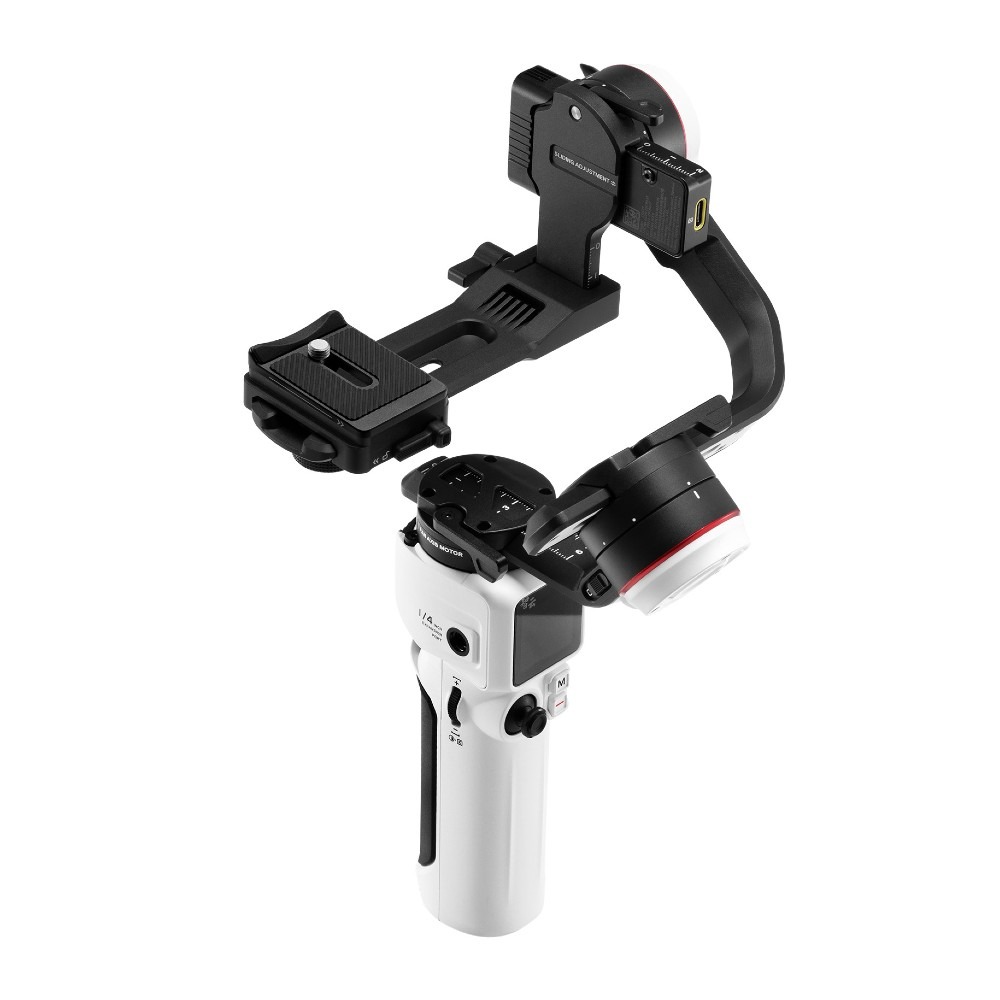
Sleek and well-made, the Zhiyun Crane-M 3S is designed for mirrorless cameras, but can easily be adapted to take a GoPro. An especially good investment if you have multiple cameras.
See the next products
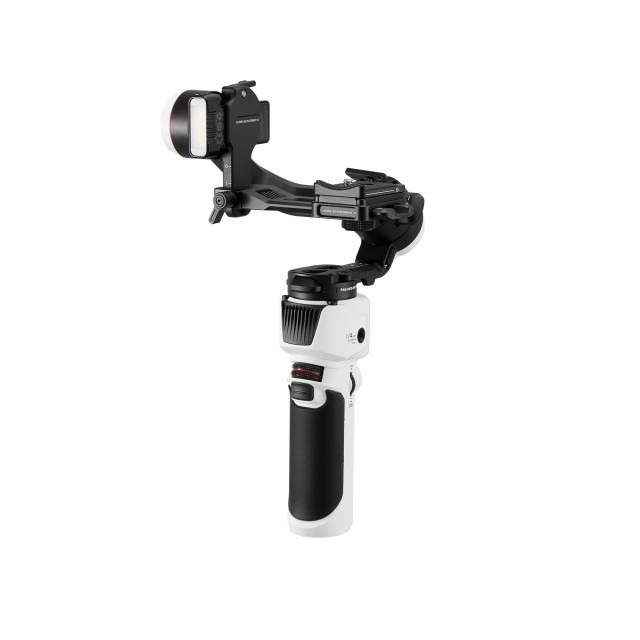
Folding up nicely, the Zhiyun Crane M3 is a great GoPro gimbal to take away with you. It's an older model, but as a GoPro user, you don't need the increased capacity of its successor.
The best GoPro gimbals
Why you can trust Digital Camera World
Best budget gimbal
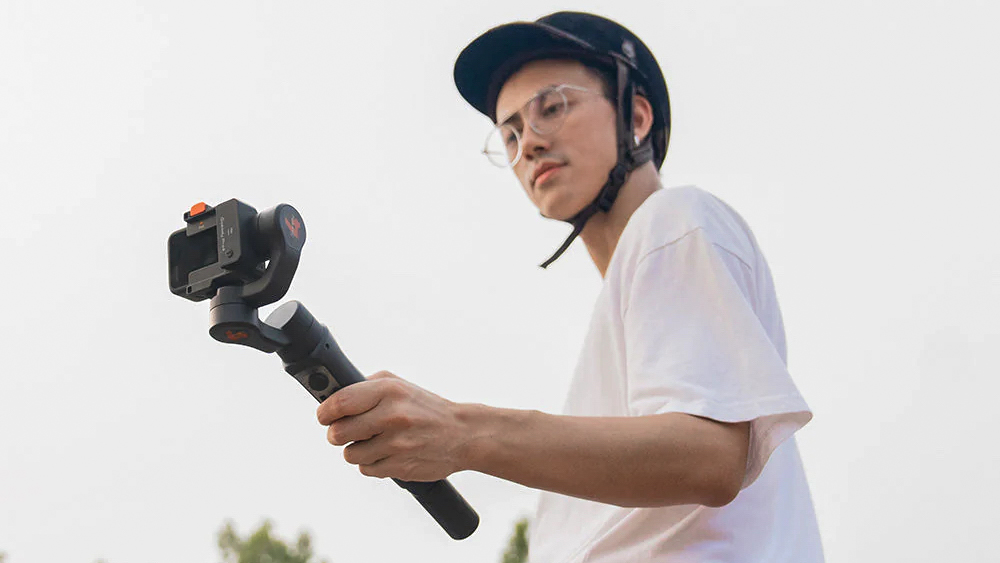
1. Hohem iSteady Pro 4
Specifications
Reasons to buy
Reasons to avoid
The biggest thing the Hohem iSteady Pro 4 has going for it is its budget price, no other gimbal on this list can touch it in this department. Although you still get a surprising amount of bang for your buck with a 3-axis stabilized gimbal that is widely compatible with several generations of GoPro's Hero range, as well other popular action cameras from DJI and Sony. A long battery life too means you won't be running to look for a charger in the middle of a day of shooting.
Best for filmmakers
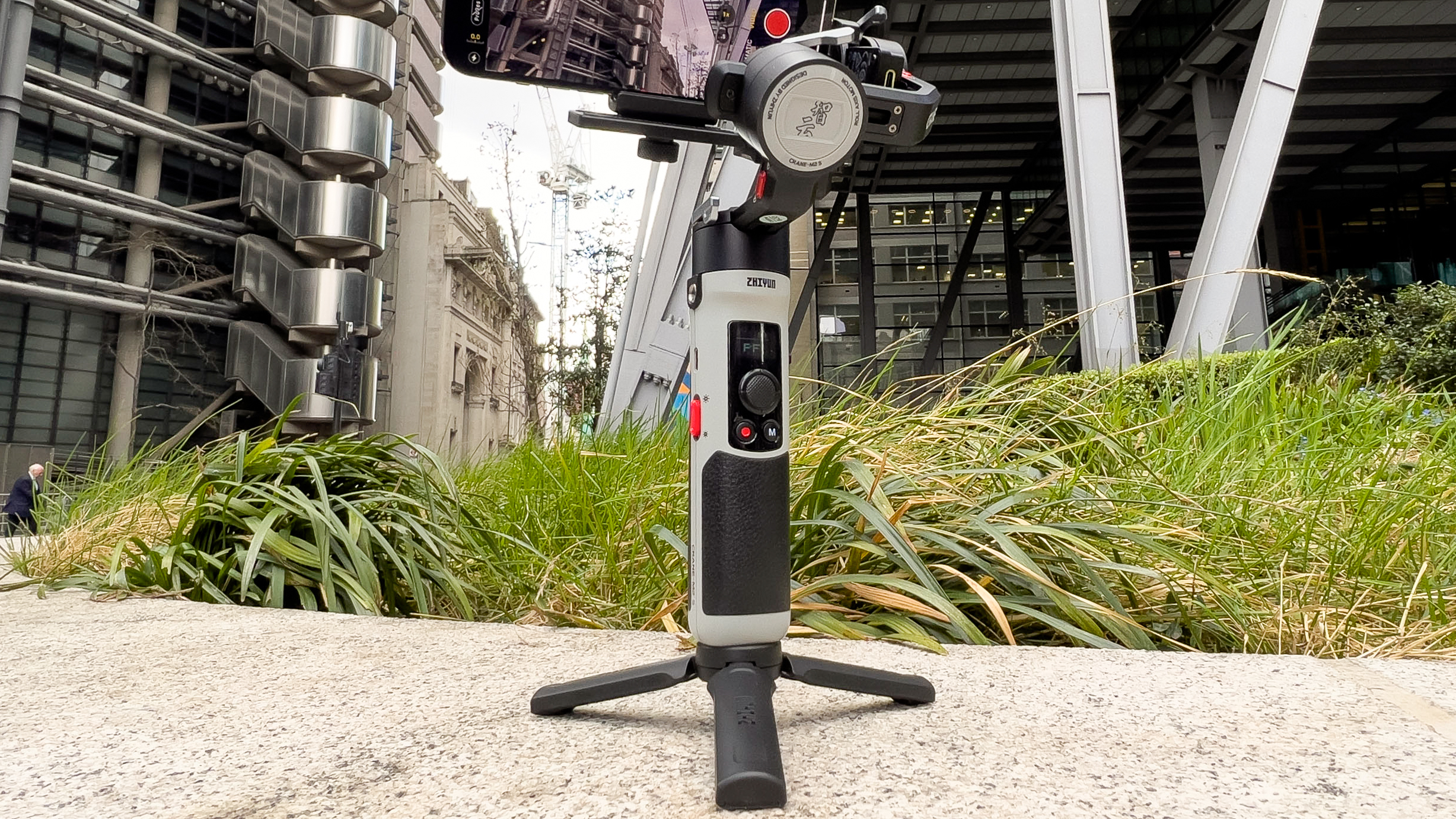
Specifications
Reasons to buy
Reasons to avoid
The Zhiyun Crane M2S enables you to perform a combination of tilts, pans, and even rolls with your GoPro action camera. It has an adjustable light with five levels of power, and four color filters to give you plenty of creative possibilities when it comes to content creation. Its quick-release plate enables you to detach a camera and remount a different one with a minimum of fuss and effort. Operated by a joystick, it features several different modes, depending on the subjects you're filming.
Read our full Zhiyun Crane M2S review for more details.
Best for tracking
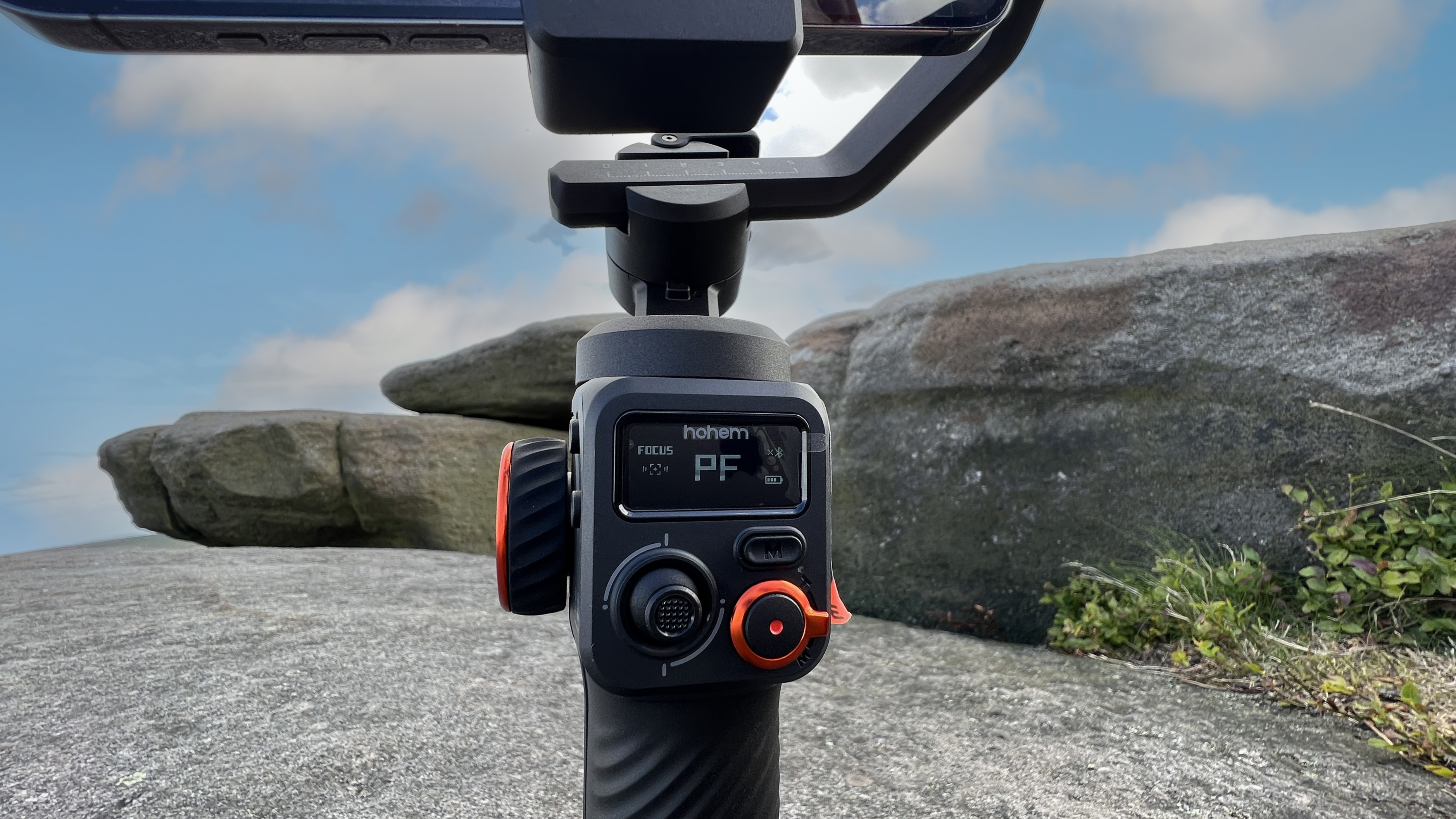
Specifications
Reasons to buy
Reasons to avoid
While it's principally designed for phones, the Hohem iSteady M6 can be bought with a cheap adapter that makes it suited for use with most action cameras of conventional dimensions. Its topline feature is its clever 'AI Sensor' — essentially an extra camera that attaches magnetically on top and can track movement of subjects on screen, allowing the camera to flawlessly follow them. It also provides a handy fill-light at the same time. Stabilisation is smooth and feels effortless, while the comfortable grip makes the Steady M6 easy to hold for long periods.
Read more: Hohem iSteady M6 review
Best with AI
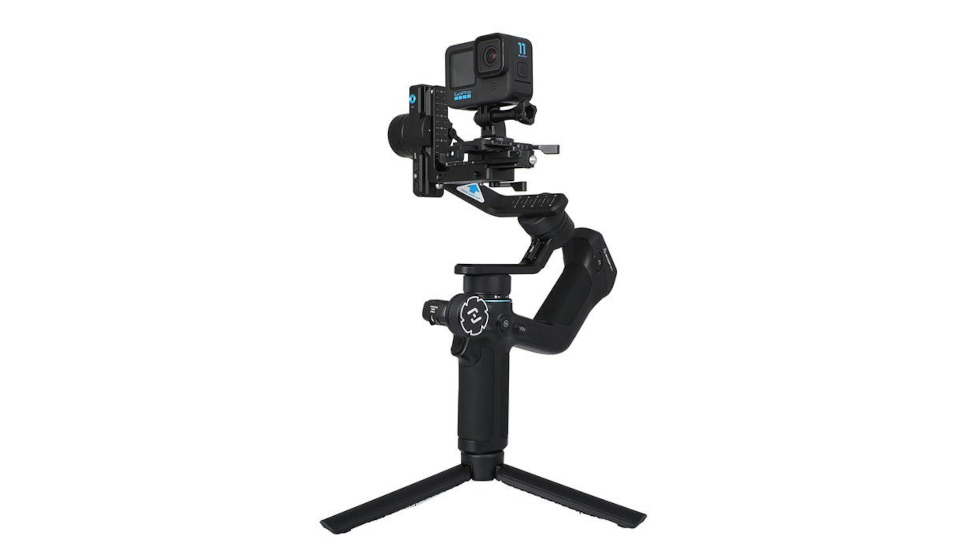
4. FeiyuTech SCORP Mini 2
Specifications
Reasons to buy
Reasons to avoid
The Feiyutech Scorp Mini 2 is a fairly recent gimbal, and as such it offers cutting-edge features like a built-in AI tracking model. This intelligent feature can recognise specific gestures, allowing you to change and toggle the tracking modes without having to move from your position and touch the gimbal or camera. For instance, you can make an 'ok' symbol to start or stop tracking, or show your palm flat out to activate the shutter. This smaller version is designed specifically for action camera dimensions, and it's compatible with the more recent generations of GoPro via Bluetooth.
We reviewed its bigger brother, the Feiyutech Scorp 2 which is designed for larger mirrorless and DSLR cameras, and we found that the some gesture controls consistently worked very well, while others required some practice to get right. The stabilisation effect itself was consistently first-rate, making it easy to create cinematic camera movements, especially when the gimbal was paired with the Feiyu Scorp smartphone app.
Best splashproof gimbal
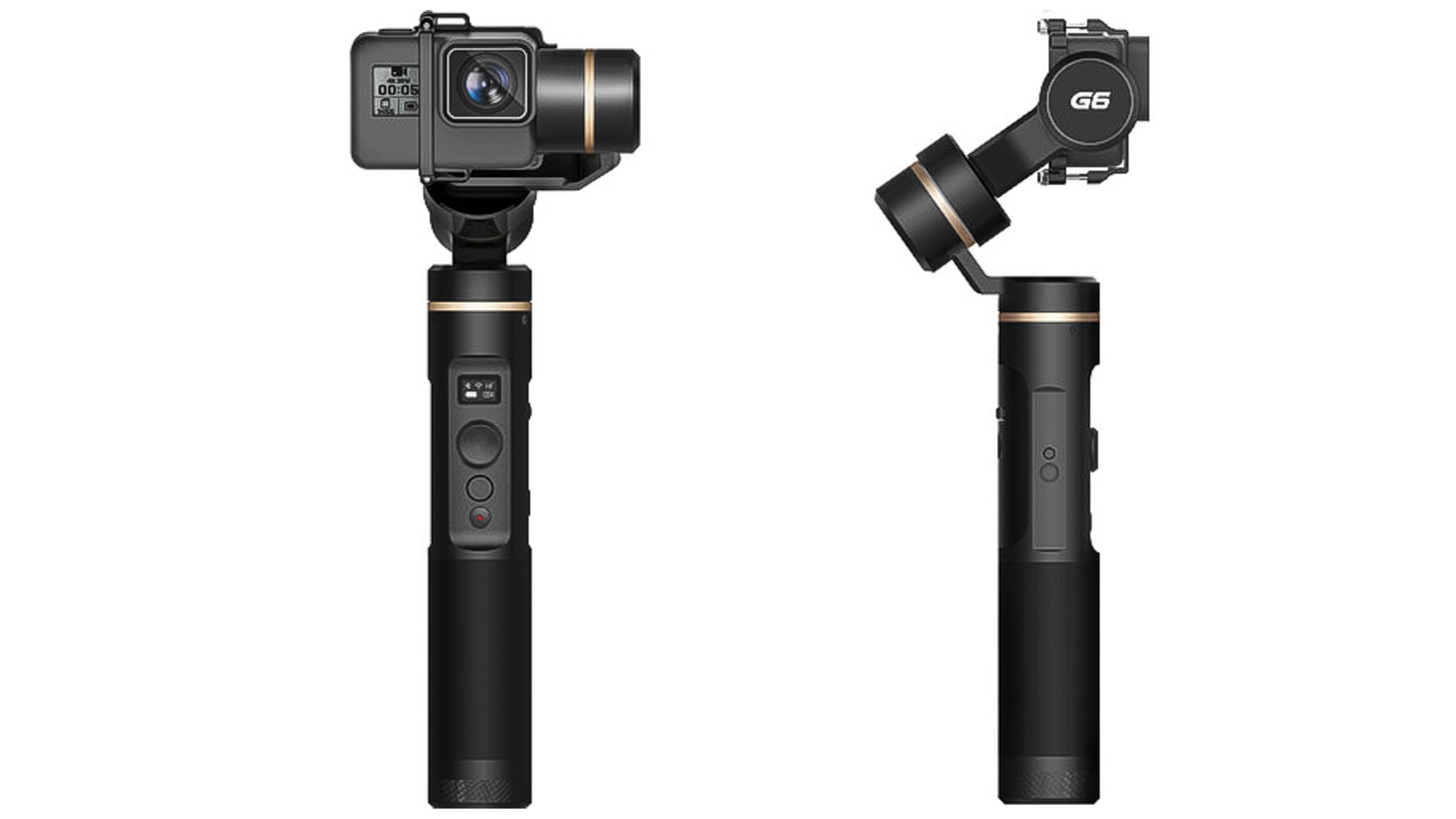
5. FeiyuTech G6
Specifications
Reasons to buy
Reasons to avoid
The FeiyuTech G6 is the best gimbal for action cameras for several reasons; it has 12 hours of battery life, it's splashproof, you can control it via an app, it has an OLED screen so you can quickly check settings and it can be used with anything from the GoPro Hero 13 to the Sony RX0 or even the DJI Osmo. It's designed so that no matter how you angle the gimbal, it will never obscure the camera screen so you can always see exactly what you're shooting. If you're planning on shooting a video using the sound from the onboard mic, you'll need to be careful as the gimbal motor sits rather close to the mic and sometimes picks up on the sound of it moving.
Best for vloggers
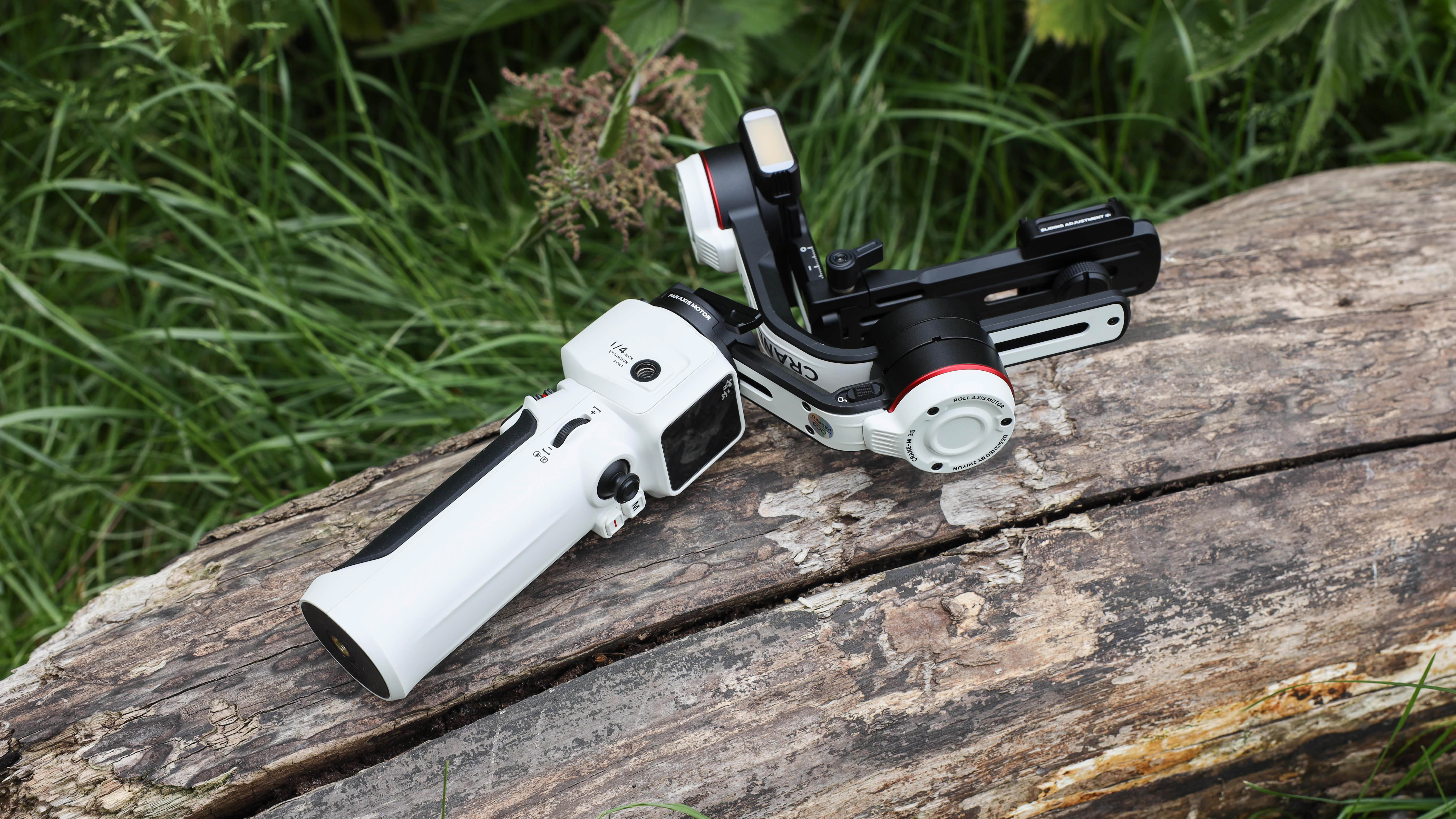
Specifications
Reasons to buy
Reasons to avoid
The Zhiyun Crane-M 3S isn't specifically designed for action cameras, instead focused on small mirrorless cameras and phones, but it can be adapted for the latest GoPro models and makes a fantastic gimbal for vloggers or content creators. The gimbal is light, yet powerful, and is a great and versatile investment if you also intend to shoot using a small-medium-sized mirrorless camera.
The controls are also intuitive, with plenty of buttons and dials for quick controls and a really useful mini touch screen for settings, it is a great gimbal to start with if you are not an experienced user. The footage is smooth and a huge step up from handheld shooting. The Crane-M 3S is very well built and looks very modern and stylish, although I do wish it was available in a darker option too.
Read our full Zhiyun Crane-M 3S review for more details.
Best for travel
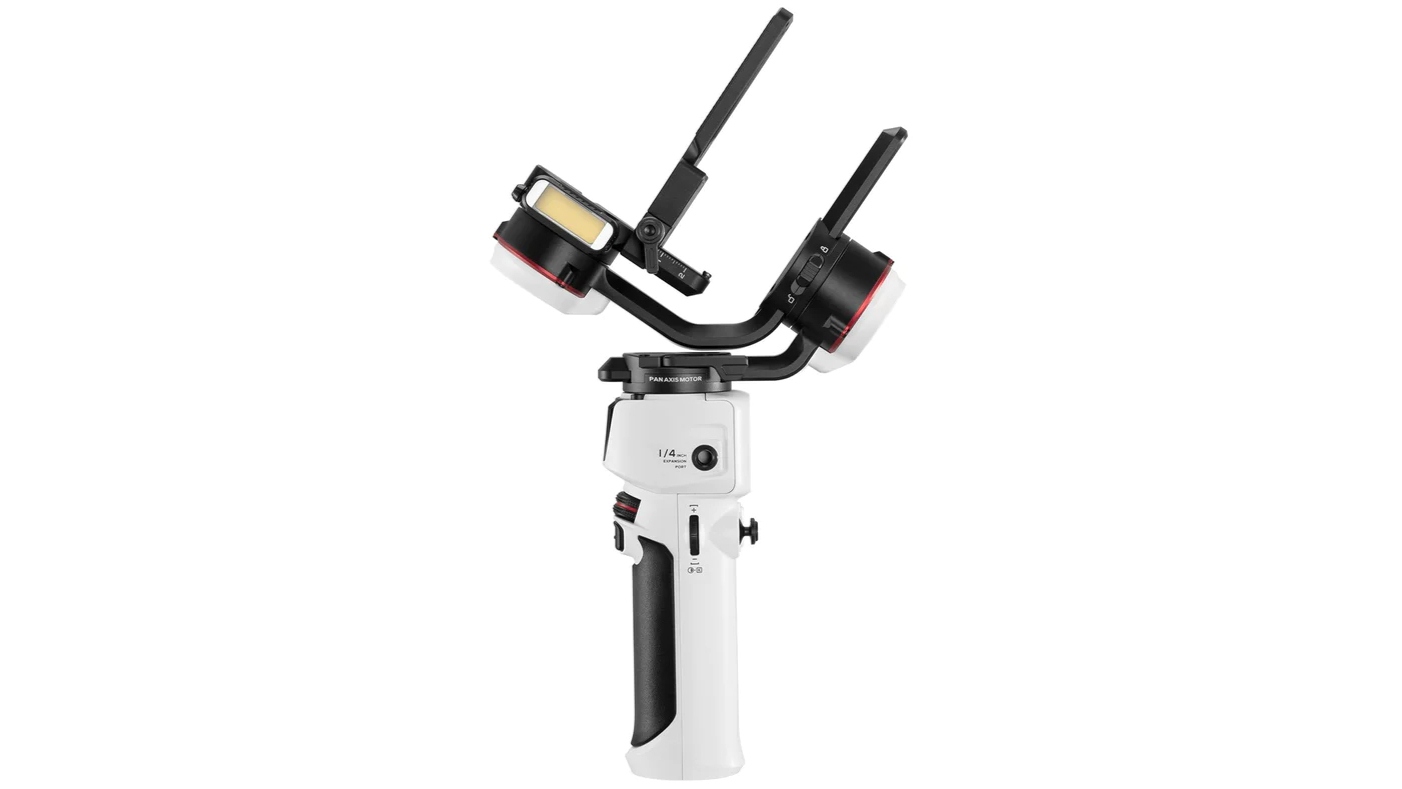
Specifications
Reasons to buy
Reasons to avoid
The Zhiyun Crane M3 has now been succeeded by a slightly newer model that can handle more weight, but for action cameras, that is not really an issue, so you might be able to save a little with this older model. The standout feature of the Zhiyun Crane M3 is its compact design. When you first take it out of the matching carry case it comes in, the size of the gimbal is quite exciting. You'll be able to hold it for much longer without getting an aching wrist – a massive plus if you've ever had to use a gimbal for an extended period.
It's also able to take a mirrorless camera or camera phone, or an action camera, which makes it the perfect all-rounder if you only want to buy one gimbal for all your cameras. The display is a bright, 1.2-inch color touchscreen which makes it easy to navigate around the menu systems. Just make sure you get the Zhiyun Crane M3 Combo, which comes with a GoPro accessory mount.
Read our full Zhiyun Crane M3 review for more details.
How to choose the best gimbals for GoPros
Gimbals are mechanical stabilizers that use several axes of rotation to keep a camera steady and compensate for unwanted movements. Gimbals have become much more sophisticated in the last few years, with options from Zhiyun, FeiyuTech, and Moza enabling amateurs to achieve smooth, clean camera movements.
One of the first things to check when you're choosing a gimbal for a GoPro is compatibility. Not all gimbals will work with all GoPro models, and information from manufacturers can be frustratingly spotty. If you can't find an up-to-date compatibility list for a gimbal you're looking at, it's worth double-checking on YouTube and Reddit to see what experiences other users have had. We have specified compatibility information on this list where able, but of course, we haven't been able to personally test every single gimbal with every single model of GoPro.
How we test gimbals
At Digital Camera World, we've assembled a team of expert reviewers who handle all of our product testing. When testing accessories like gimbals, we focus more on field testing than lab testing. We take them out into real shooting scenarios to see how they perform — in the case of gimbals, what kind of stabilized footage are we able to achieve? We also look at how easy they are to set up, pair and calibrate with their intended devices, and whether any app integration works as intended. Learn more about how we test and review at Digital Camera World.
FAQs
Is a gimbal necessary for a GoPro?
While the GoPro HyperSmooth stabilisation system is fine for day-to-day use, anyone who's serious about producing professional-standard video with their GoPro needs to at least have a gimbal in their kit bag. This is particularly the case if you're going to be working indoors or in low light, as the HyperSmooth stabilisation (and indeed the GoPro in general) is much less effective in poor light.
Should I turn off image stabilization when using a gimbal?
Yes. In-camera image stabilization systems like GoPro's HyperSmooth are not designed to work in tandem with gimbal-based stabilisation, and the two can interfere with each other. Once you've attached your GoPro to your gimbal, remember to turn off the in-camera stabilization – the good news is, you won't need it!
Get the Digital Camera World Newsletter
The best camera deals, reviews, product advice, and unmissable photography news, direct to your inbox!

Lauren is a writer, reviewer, and photographer with ten years of experience in the camera industry. She's the former Managing Editor of Digital Camera World, and previously served as Editor of Digital Photographer magazine, Technique editor for PhotoPlus: The Canon Magazine, and Deputy Editor of our sister publication, Digital Camera Magazine. An experienced journalist and freelance photographer, Lauren also has bylines at Tech Radar, Space.com, Canon Europe, PCGamesN, T3, Stuff, and British Airways' in-flight magazine. When she's not testing gear for DCW, she's probably in the kitchen testing yet another new curry recipe or walking in the Cotswolds with her Flat-coated Retriever.
- Gareth BevanReviews Editor
